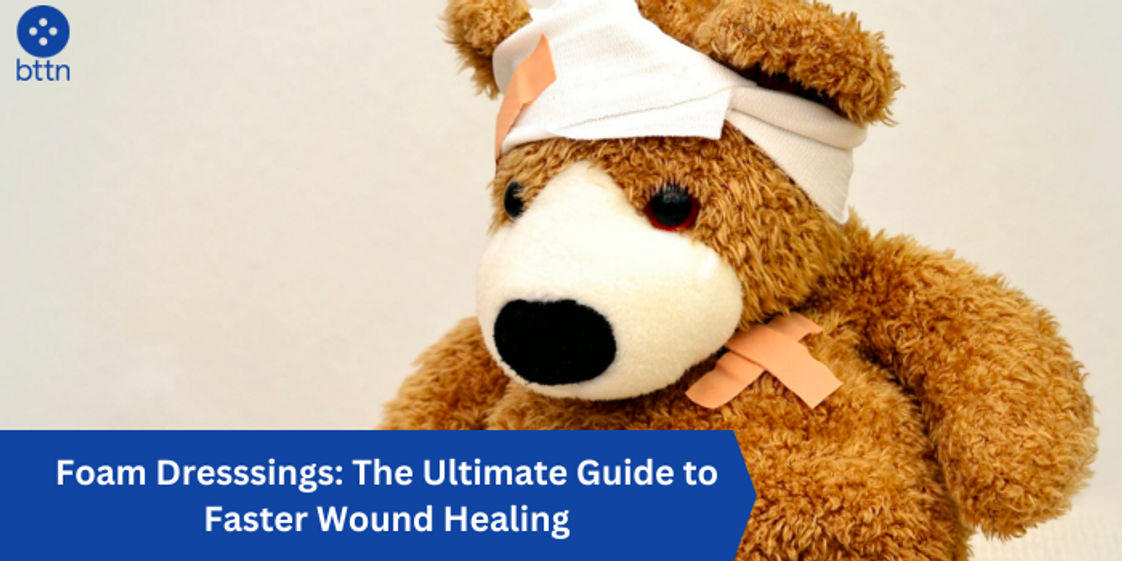
Foam Dresssings: The Ultimate Guide to Faster Wound Healing
Posted by Pankaj Dhiman on Nov 25th 2024
Wounds are a part of life, and their proper care is crucial for a speedy recovery. Foam dressing has emerged as a revolutionary solution in wound management, offering numerous benefits. In this comprehensive guide, we'll delve into the world of foam dressing, covering everything you need to know for effective wound care.
Understanding Foam Dressing:
Foam dressings are a type of wound care product designed to provide a conducive environment for healing. These dressings come in various shapes and sizes, making them suitable for different wound types. The key features that set foam dressings apart include their absorbency, moisture retention, and breathability.
Must Read: Shop Hydrocolloid Wound Dressings Online at Wholesale Prices
Types of Foam Dressing:
- Adhesive Foam Dressings: Explore the benefits of adhesive foam dressings, which not only provide a protective barrier but also adhere securely to the skin, ensuring a snug fit.
- Non-Adhesive Foam Dressings: Learn about the versatility of non-adhesive foam dressings, which are easy to apply and remove, making them an excellent choice for sensitive skin.
- Silicone Foam Dressings: Dive into the advantages of silicone foam dressings, known for their gentle adherence and ability to conform to wound contours, promoting optimal healing.
Must Read: Hydrocolloid Bandages: What Is It, Uses, and More
Benefits of Foam Dressing:
- Absorbency: Understand how the high absorbency of foam dressings helps in managing exudate, preventing maceration, and maintaining a moist wound environment.
- Moisture Retention: Explore the role of moisture retention in promoting faster healing, reducing pain, and minimizing scarring.
- Breathability: Discover how the breathable nature of foam dressings allows for proper oxygen exchange, essential for the wound healing process.
Must Read: Wound Closure vs Wound Dressings: A Comparative Analysis
Choosing the Right Foam Dressing:
Wound Type: Understand the importance of selecting foam dressings based on the specific characteristics of the wound, such as size, depth, and exudate level.
Adherence: Learn about the factors influencing adherence, including the wound location and patient's skin sensitivity, to choose the most suitable dressing.
Cost Considerations: Explore cost-effective options without compromising on quality, ensuring efficient wound care within budget constraints.
Application of Foam Dressing:
- Step-by-Step Guide: Follow a simple step-by-step guide on how to apply foam dressings correctly for maximum effectiveness.
- Tips for Secure Application: Discover tips for securing foam dressings in challenging areas, such as joints or contours, to ensure optimal coverage and protection.
Must Read: Infection Control: The Ultimate Guide to Preventing Infections
Indications for Foam Dressing Use:
Foam dressings excel in managing wounds with a moderate to heavy exudate. Their high absorbency helps prevent maceration of the surrounding skin while maintaining an optimal moist environment for healing.
Pressure Ulcers:
Patients with pressure ulcers benefit from foam dressings due to their ability to conform to wound contours. This is particularly advantageous for wounds in areas prone to pressure, such as the sacrum or heels.
Postoperative Wounds:
Foam dressings are often recommended for postoperative wounds, providing a protective barrier against external contaminants and supporting the healing process.
Traumatic Wounds:
Wounds resulting from trauma, including abrasions, lacerations, or crush injuries, can benefit from foam dressings. Their versatility accommodates various wound shapes and sizes.
Venous Leg Ulcers:
Chronic wounds like venous leg ulcers, which often have a high exudate level, find relief with foam dressings. The dressings' absorbent properties aid in managing the excess fluid.
Partial Thickness Burns:
Foam dressings can be used for partial thickness burns, providing a protective layer and supporting the healing process. However, their use should be guided by healthcare professionals.
Must Read: Kinesiology Tape: Benefits, Applications, and How to Use It
Conclusion
Understanding the indications and contraindications for foam dressing use is pivotal in promoting effective wound healing. By recognizing when to employ foam dressings and when alternative treatments are more suitable, healthcare professionals and individuals alike can navigate the path to optimal wound care.
Always remember that individual cases may vary, and a personalized approach guided by healthcare expertise is crucial for successful outcomes.
Incorporating this knowledge into wound care practices ensures that foam dressings are utilized where they can shine, contributing to faster healing and improved overall patient well-being.
